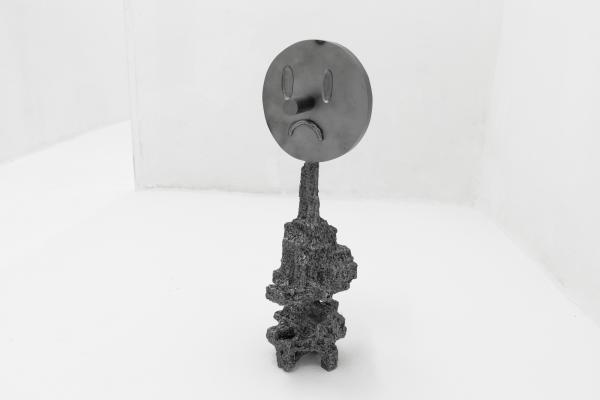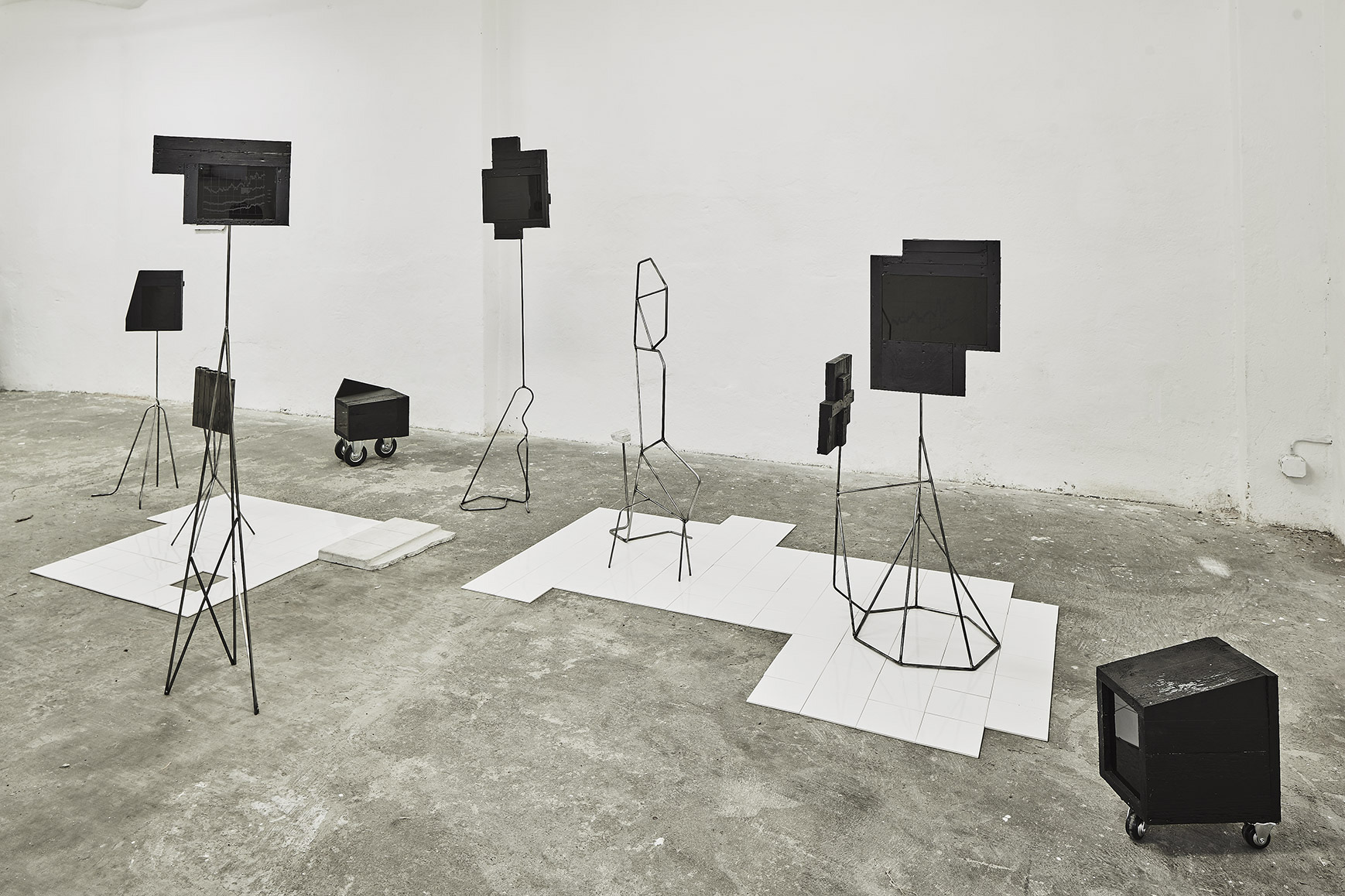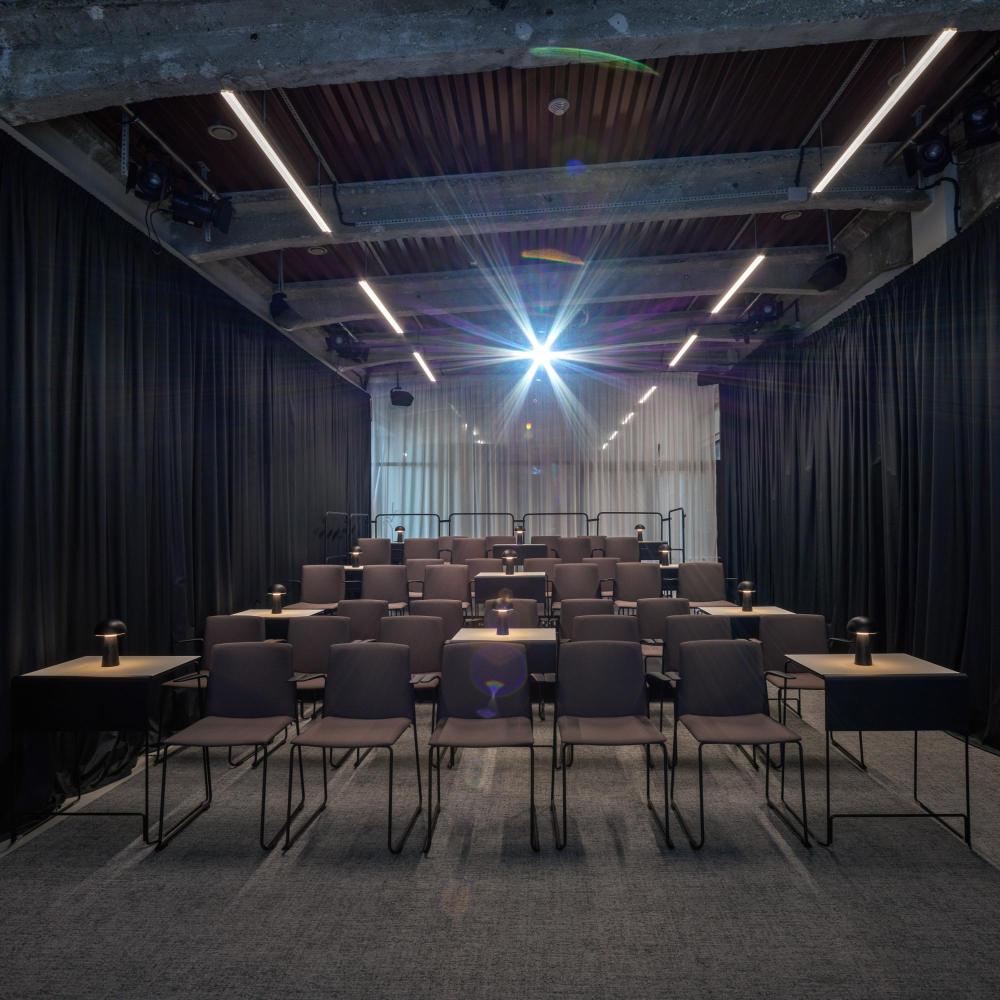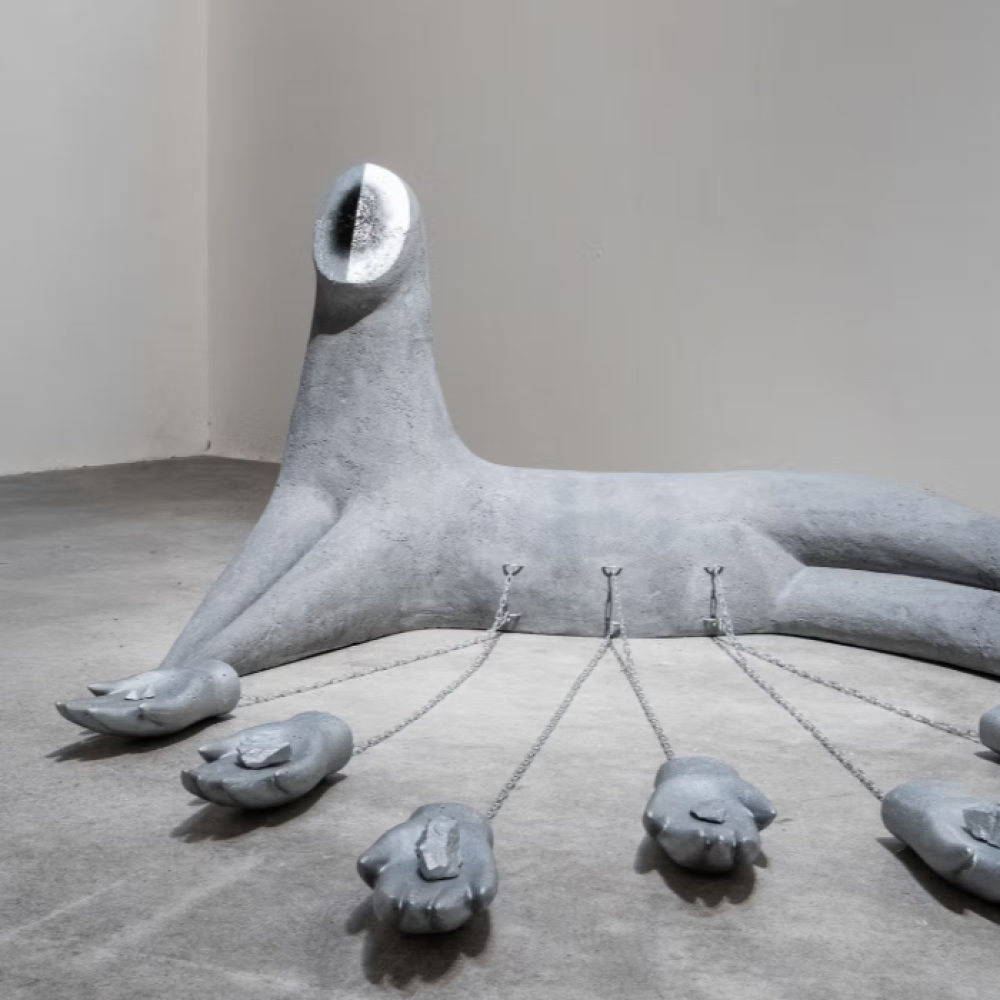
From 20-26 May 2022, visitors to the Telegraph will have the opportunity to see Tomas Roubal: 5G, an exhibition that alludes to the current issue of individuals moving online. This short-term exhibition project will now take its place in the Telegraph cinema.

You can be considered a versatile artist who works in a variety of artistic techniques. It is impossible not to notice that it is the work on three-dimensional objects and on sculptures that dominates your work above the rest. Why did you decide to favour this path and how did you come to it?
It was actually a natural evolution. In school I was mainly involved in drawing and printmaking, but after graduating I didn't even own a graphic press, let alone my own studio. That led to me starting to do large-scale murals. Eventually, I found a studio and started working on different things: drawing, rabbit skin tattoos, painting, screen printing, and maybe even an artist book. But it wasn't until 2014 that the first sculptures were made for the Worstseller exhibition, which was part of the "Start up" series of exhibitions at the Capital Gallery. The theme of this exhibition was sexism in advertising. I really enjoyed the absurd compositions full of naked women (mostly only certain parts of the female body) in combination with the products offered, the tasteless graphic design and stupid advertising slogans like "We cut everything". I wanted to draw attention to this bizarre issue. Back then, this type of advertising was quite common, it was everywhere and people didn't even notice it anymore. I thought that I could put this theme in a different context - to translate it into three-dimensional compositions. I thought that when the viewer sees this theme sculpted, he might think about it and realize what he is constantly surrounded by. I modelled only the supporting part of the ad, i.e. the figure and the product. What emerged were absurd results, stripped of all advertising effects. Monochrome, black, without garish colours. I changed the advertising slogan into the name of the sculpture. This was my first sculptural work. I was very excited about it at the time, it opened up completely new possibilities of expression. Since then, I have stayed with three-dimensional work and I create flat things rather marginally.
Your work is largely a reaction to the negative mechanisms of the modern world. On what basis do you choose the subjects for your work?
Mostly things that annoy me personally and I feel the need to comment on them, to comment on them in some way. In the past, for example, it was the migration crisis, the housing issue, the Airbnb issue and so on. At the moment, I am most interested in things related to mobile phone addiction and our online lives, and I feel that I will stay on this topic for a while. It still has a lot to offer me, it's just become a normal part of our lives. It's all there. So my most recent work follows on from the sculptures that will be on display in the Telegraph, but in the future I'd like to change the scale and start working at least life-size. At the moment I'm more experimenting with the technological methods that welding allows and looking at other ways of combining metal with other materials. Actually, all my work pretty much depends on what technology is available to me at the moment. I learn everything myself, and this inevitably leads to various, interesting to me, mistakes and technological errors, which I then use purposefully in my work. The mistake has simply become part of my work.
As mentioned, you use a variety of materials and processing techniques in your work. Personally, I am particularly interested in hand 3D printing of metal. Could you explain to the readers the process of creating such an object?
This is an identical process to, for example, conventional 3D printers, only in this case I am the printer myself and instead of plastic, metal is layered. Conceptually, it's actually a protest against these accelerated times, where one is constantly dealing with a multitude of things at once and there is no room to stop. 3D printers are meant to speed up the manufacturing process, to increase production. On the other hand, paradoxically, my printing technique is very lengthy and of course quite uneconomical, it takes me hundreds of hours in a welding hood and respirator to print a large object. The result is surprisingly very organic and the whole process is reminiscent of wasps' nests. I enjoy the process starting with the iron ore, the blast furnace, the iron, the welding wire, the welder and ending with the organic object. This whole purely industrial endeavour brings back something natural.
You have a rich exhibition history both here and abroad. This time you will exhibit, so to speak, at home, in your native Haná, because you are a native of Prostějov. What are your feelings about this?
I am looking forward to it.
What will the 5G exhibition bring to Telegraph visitors?
I can't say. It will probably be the same as it always is, with everything. It may appeal to some, it may disappoint others. Either way, anyone interested in not-quite-traditional metal work and sculpture might walk away satisfied.

Tomáš Roubal (*1982) is a graduate of the Academy of Fine Arts in Bratislava. He is engaged in sculpture, painting, drawing and author's book. His works respond to current problems in society, which he processes in a visually clear and simple handwriting. Themes of job burnout and the false illusion of man in the environment of the internet and social media resonate throughout his work. In doing so, he uses specific materials and techniques - for example, three-dimensional hand-printed metal. It is a slow process, defining itself against today's hectic times. His works tend to be imbued with an imperfection that becomes a creative intention.







